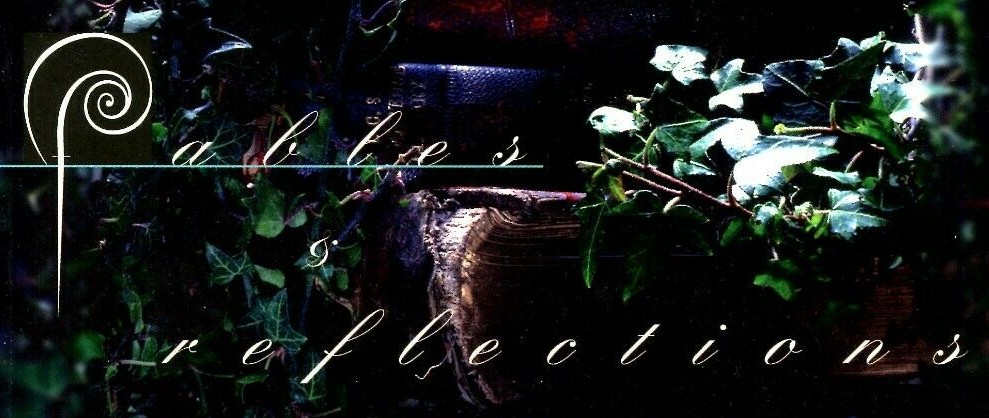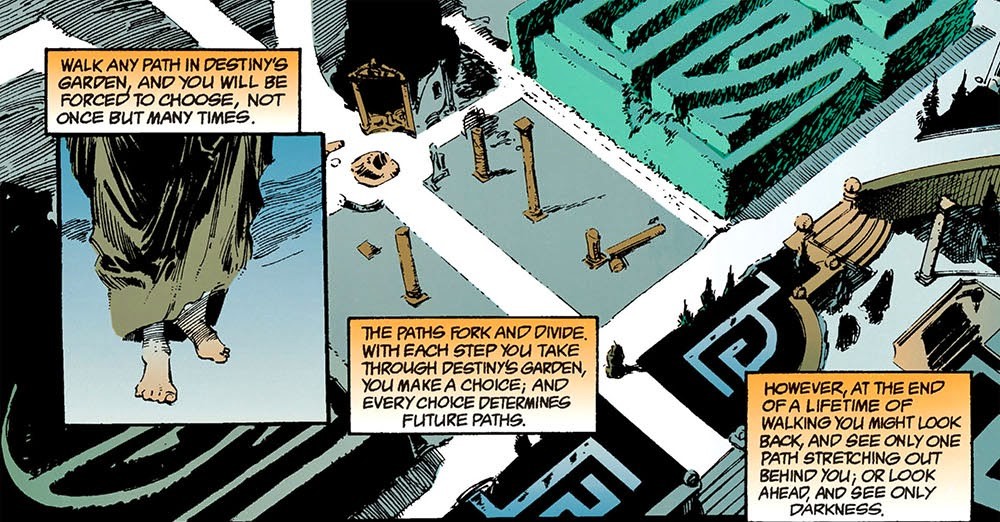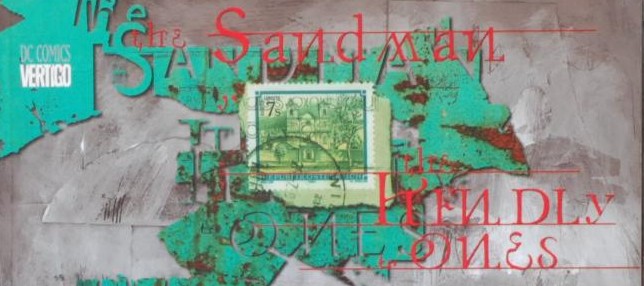Fables & Reflections is an odd one. While it is just a collection of short stories, the issues aren’t presented in order. Three of the issues were published before the A Game of You and “Ramadan,” issue #50, was published after the next story arc. There’s also a brief story that appeared in Vertigo Preview #1 and Sandman Special from 1991.
If this seems like it’s all over the place, you’d be right.
Traditionally, though, I do think the standalone stories are where Neil Gaiman tends to shine and there are many surprises here. Some are good surprises and some are just … surprises. If you haven’t been paying attention to how The Sandman is a story about stories, Gaiman is going to make sure you know after this one. Some of the stories are slight and some are powerful but they are, for the most part, good ones.

“Three Septembers and a January” is another one of those classic issues of The Sandman, focusing on Emperor Norton, a man who declared himself emperor of the United States in 1859. It’s fun and it’s playful and while I’m not the biggest fan of Shawn McManus’ art generally, his style works for this tale that’s both grounded and over-the-top.
“Thermidor” is just fine — I like Lady Johanna Constantine but this just feels like some piece-moving while giving Gaiman a chance to pontificate on revolutions and such. “The Hunt” is mostly a classic fairy tale (with an obvious stinger at the end) and is another one of those cases where Gaiman wanted to play with another culture (in this case, Eastern Europe).
“August” is strangely thoughtful but bleak as Augustus Caesar spends a day as a beggar because Dream told him the gods wouldn’t be able to spy on him and his thoughts. Bryan Talbot does some incredibly fine work here, with inks by Stan Woch. He’s great at communicating dark moments with subtlety.
I have never particularly liked “The Song of Orpheus” from Sandman Special. I would not say there is anything particularly wrong with it (other than I don’t think Mark Buckingham is a great match as an inker to Talbot’s pencils) but Orpheus and Eurydice are barely characters. We don’t really get to see how much he loves Eurydice and she dies almost immediately. Certainly, Dream can be cold, but Orpheus’ transition to “I hate you dad” seems like it happens too fast.
I think that’s mostly the problem with “The Song of Orpheus” — everything just seems rushed without much insight into this particular myth. Like “Thermidor,” it feels less like a story and more like “This is foreshadowing! This will be important later.”
Artistically, it’s a bit of a grab bag. I would not say that any of the artists here are bad, but some of the matchups are odd. I don’t think Kent William’s art fully works with the story Gaiman is telling in “Fear of Falling” and maybe it was just the constraints of the schedule, but John Watkiss’ art looks surprisingly rough in “Soft Places.” But Jill Thompson’s work on “The Parliament of Rooks” is a delight and as ridiculous and her “L’il Endless” do embody the whole “dark whimsy” thing I keep bringing up with The Sandman.
I like “Ramadan” well enough. P. Craig Russell’s art evokes the wonder of the Baghdad of dreams. And it’s literally that — the plot involves Caliph Harun al-Rashid giving his city to Dream to preserve its beauty and perfection. It’s lush with details but in the end, I think it’s a bit too simple of a story with the point of “everything fades.” The unneeded stinger at the end with a boy on crutches listening to an old man tell him this tale war-torn Baghdad feels eye-rollingly obvious. I’m pretty sure that was tiresome when this issue came out in 1993.
Fables & Reflections doesn’t feel as strong to me as Dream Country in terms of short story collections, but some of that is because it’s longer and is therefore messier. I admire Gaiman’s desire to tell stories about stories and try to wrangle big ideas into these pages. I think he’s more successful than he’s not. While this is probably one of the volumes of The Sandman I’ve reread the least, I was happy to rediscover quiet and heartbreaking moments here.




